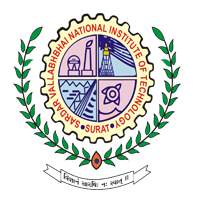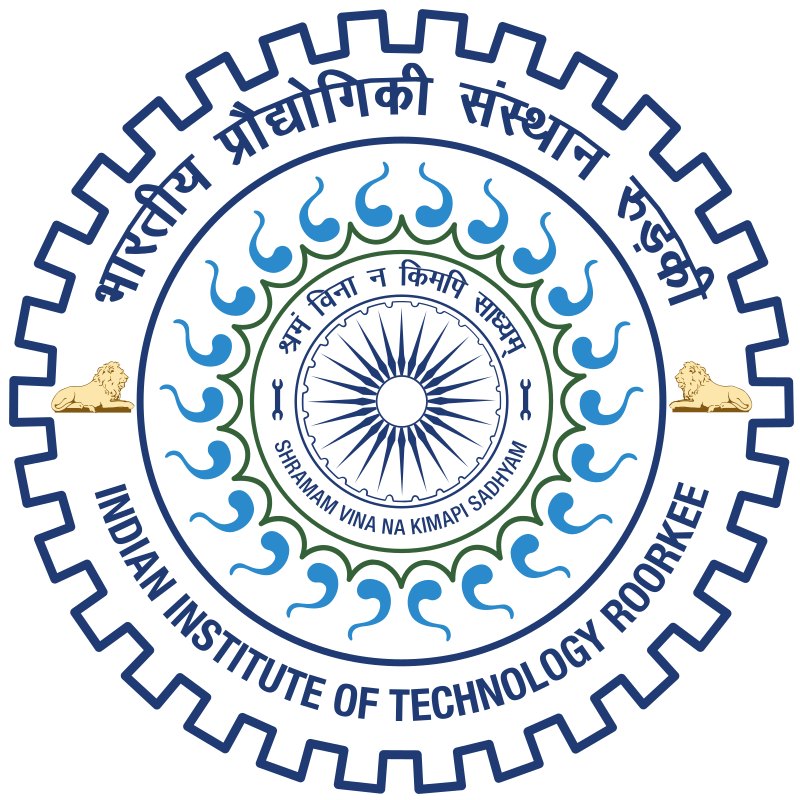5th International Conference on Recent Advances in Mechanical Infrastructure
organised by IITRAM Ahmedabad in association with IIT Roorkee and SVNIT Surat

5th International Conference on Recent Advances in Mechanical Infrastructure
organised by IITRAM Ahmedabad in association with IIT Roorkee and SVNIT Surat

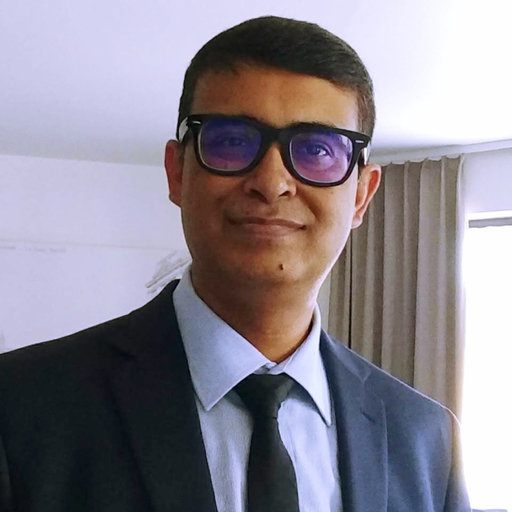
Dr. Prabal Talukdar
CEA Chair and Professor (HAG)
Department of Mechanical Engineering of IIT Delhi
Dr. Prabal Talukdar is currently working as a CEA Chair and Professor (HAG) in the Department of Mechanical Engineering of IIT Delhi. He did his MTech and PhD from IIT Guwahati and Bachelor of Engineering from Assam Engineering College. Prof. Talukdar worked as a Post-Doctoral fellow at the University of Saskatchewan (2005-2006), Canada and University of Erlangen-Nuremberg (2002-2005), Germany. He has authored about 115 papers in international journals and 80 papers in International Conferences and filed four patents. Sixteen students successfully defended their PhD thesis under his supervision and currently, 3 PhD students are working under his guidance. He has carried out about 16 sponsored research project and consultancy. He is currently an Associate Editor of “Journal of Enhanced Heat Transfer”. He also served as an Associate Editor of “ASME Journal of Thermal Science and Engineering Applications” during 2019-2023. He has been placed in the list of top 2% scientists worldwide published by Stanford University in the previous 3 years. His research areas are heat and mass transfer in porous media, continuous casting, convective drying, Inverse heat transfer, heat transfer through thermal protective fabric, Bio-heat Transfer, radiative heat transfer etc.
Title: Volumetric Solar Receivers – Modelling of Heat Transfer
Abstract: Sustainable energy sources are the need of the hour in view of declining conventional sources and escalating energy demands. Solar energy stands out as one of the most promising renewable energy sources due to its abundant free availability in nature and increasing output efficiencies over other energy resources. In Concentrated Solar Power systems, the receiver plays a critical role in, responsible for converting concentrated solar radiation into thermal energy. Various types of receivers exist for capturing the heat and transferring it to the Heat Transfer Fluid (HTF). Volumetric Solar Receivers (VRS) work on the concept of volumetric solar absorption, i.e., the solar radiation is absorbed throughout the volume of the receiver rather than just on its surface. The core of the VSR consists of a porous absorber, which enables the volumetric absorption of solar radiation.
The operation of a VSR involves a complex intercoupling of various physics, including fluid flow, thermal radiation transport, heat transfer and structural mechanics. The modelling of this complex governing physics is crucial for the performance evaluation and optimization of VSRs. The primary objective of a VSR is to produce high-temperature heat transfer fluid at its outlet with minimal pressure drop. Moreover, operating at elevated temperatures leads to thermal gradients and stresses. Therefore, assessing VSR performance necessitates analyzing hydraulic, thermal, and mechanical behaviours and their variations with porous structure and design parameters. Pore scale heat transfer modelling is computationally expensive while they are useful to study the actual behaviour of the heat transfer phenomena. Computation using volume averaged modelling is relatively faster and is suitable for multiphysics problems. A brief overview focusing on the heat transfer modelling through VSR will be presented in this work.
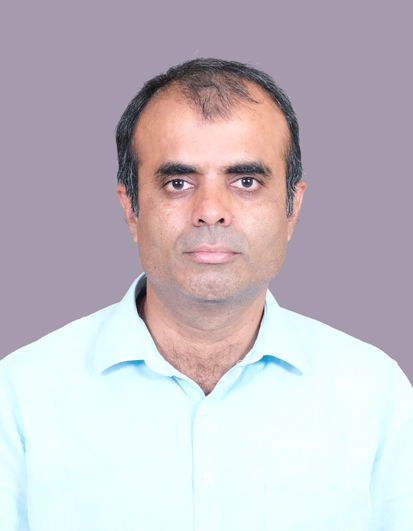
Dr Vishal Uttamrao Bagade
Scientist 'F'
Gas turbine research establishment, DRDO, Min of Defence,
Bangalore-560093
(To be confirmed)

Lt Gen P R Shankar (Retd)
(To be confirmed)
Lt Gen P R Shankar is a retired Director General of Artillery. He is an alumnus of National Defence Academy Khadakvasala, Defence Services Staff College, Wellington, Army War College, Mhow, Naval Post Graduate School, Monterrey and National Defence College, New Delhi. He has held many important command, staff and instructional appointments in the Army. He has vast operational experience having served in all kinds of terrain and operational situations which has confronted the Indian Army in the past four decades. He gave great impetus to the modernization of Artillery through indigenization. He has deep knowledge, understanding and experience in successful defense planning and acquisition, spanning over a decade. Major 155mm Gun projects like the Dhanush, M777 ULH and K9 Vajra, Rocket and Missile projects related to Pinaka, Brahmos and Grad BM21, surveillance projects like Swati WLR and few ammunition projects came to fructification due to his relentless efforts. The General Officer is now a Professor in the Aerospace Department of Indian Institute of Technology, Madras., Chennai. He is actively involved in applied research.

Sylvie Lorente
Associate Dean for Research and Innovation and
College of Engineering Chair Professor in Mechanical Engineering, Villanova University
(To be confirmed)
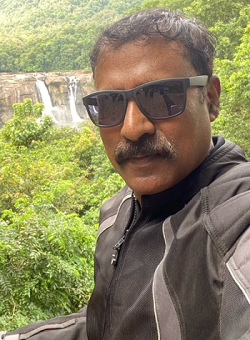
Brigadier P S Ramesh, Former Indian Army officer
Topic: Unmanned Aircraft Systems (UAS)
Brigadier P S Ramesh, is a former Indian Army officer with a strong academic and research orientation. He is among the pioneers of Unmanned Aircraft Systems (UAS), popularly referred to as drones, in India and has spent more than two decades developing a niche specialisation in the technology.
His journey with unmanned systems began in 2003, when he was selected for the UAS system engineer course in Israel based on his meritorious service. He was hand-picked for the advanced course at the same institution in 2005 because of his outstanding performance in the system engineer course.
Apart from establishing a UAS operational base from scratch, he has also executed greenfield projects of setting up a complete technical facility for UAS with limited resources. As a domain specialist on UAS, he was actively involved in the formulation of various UAS policies, the preparation of trial evaluation documents, and the conduct of UAS trials.
Considering his rich aviation experience and knowledge, he was selected for the coveted position of Dean, Faculty of Aeronautical Engineering, Military College of EME, Secunderabad. He played a pivotal role in formulating the UAS training curriculum for the technical crew of the entire Indian Army. As the Chief UAS instructor for M Tech students and all UAS technical courses of the Indian Army, apart from delivering lectures, he also guided M Tech thesis on UAS and directed diverse student projects on UAS.
Brigadier P S Ramesh is an alumnus of the prestigious Defence Services Staff College, Wellington. He has a PhD in Aerospace Engineering and doctorate research topic was, predictably, on UAS. His academic credentials include MSc (Def Studies & Strat Sciences) and MTech (Aero Engg). The thesis for both PG programmes was on UAS, covering the tactical and technical perspectives. He also has an MBA (Fin) from Osmania University.
He was awarded the prestigious Army Commander's Commendation in 2005 for his outstanding contributions to critical UAS operations. For his exceptional contributions to UAS training, he earned his second Army Commander's Commendation in 2014.
The European Union Intellectual Property Office and Controller General of Patents, Designs & Trade Marks, India has awarded him two patents each on UAS design. He has also published extensively on UAS in SCI and Scopus indexed scientific journals and his works have been cited extensively. He has been an invited speaker at several military, industry, and academic seminars on unmanned systems. He is also a regular contributor to leading defence magazines.
Brigadier P S Ramesh took voluntary retirement from the army, probably at the peak of his career, to pursue his passion for unmanned systems. Presently he is working as a consultant with various companies associated with unmanned systems.
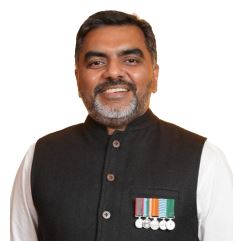
Lt Col Narendra Tripathi (Retired, Indian Army Officer)
Topic : Military Technology
Lt Col Narendra Tripathi is a highly respected veteran of the Indian Army, having served for over 25 years in the Indian Army. An alumnus of the prestigious National Defence Academy (NDA), he was commissioned into the Corps of Electronics and Mechanical Engineers of Indian Army in 2000 after graduating from the Indian Military Academy (IMA).
Lt Col Tripathi holds a Master of Technology in Robotics from IIT Kanpur, alongside a Bachelor's degree in Electronics from MCEME and a Bachelor's in Science from NDA. His academic achievements are further complemented by credentials in Business Management from IIM Indore, Project Management (PMP) from PMI-USA, Certified Scrum Master, Lean Six Sigma Green Belt from KPMG, and Digital Marketing from XLRI, Jamshedpur. He has also attended various prestigious Army courses at EME School Vadodara and Army war college Mhow in defence management.
Throughout his distinguished career, Lt Col Tripathi has held pivotal roles in both combat operations and technology management, with extensive experience in counter-insurgency operations across Jammu & Kashmir, Ladakh, and the North East, including active involvement in Operation Parakram in 2001, he has spearheaded several groundbreaking projects, such as the production of customised driving, weapon & medical simulators at a base workshop and the development of cuttingedge robotic and drone technologies at Simulator Development Division. Most notably, he led the acclaimed Swarm of Drones project, which was showcased at the Army Day parade in 2021.
A passionate researcher, his work on exoskeletons during his MTech at IIT Kanpur contributed significantly to enhancing soldiers' operational capabilities. His insightful articles on Military Technology have been widely appreciated in Indian defense journals.
Since retiring from the Army, Lt Col Tripathi has continued to make an impact in leadership roles within the fields of Military Technology and global business development. He is currently an Independent Subject Matter Consultant and Cofounder of various startups and multinational corporations, particularly in the cross functional domains of Drones, Robotics, AI, and AR/VR, with many ventures incubated at leading institutions like IITs and IIITs.
